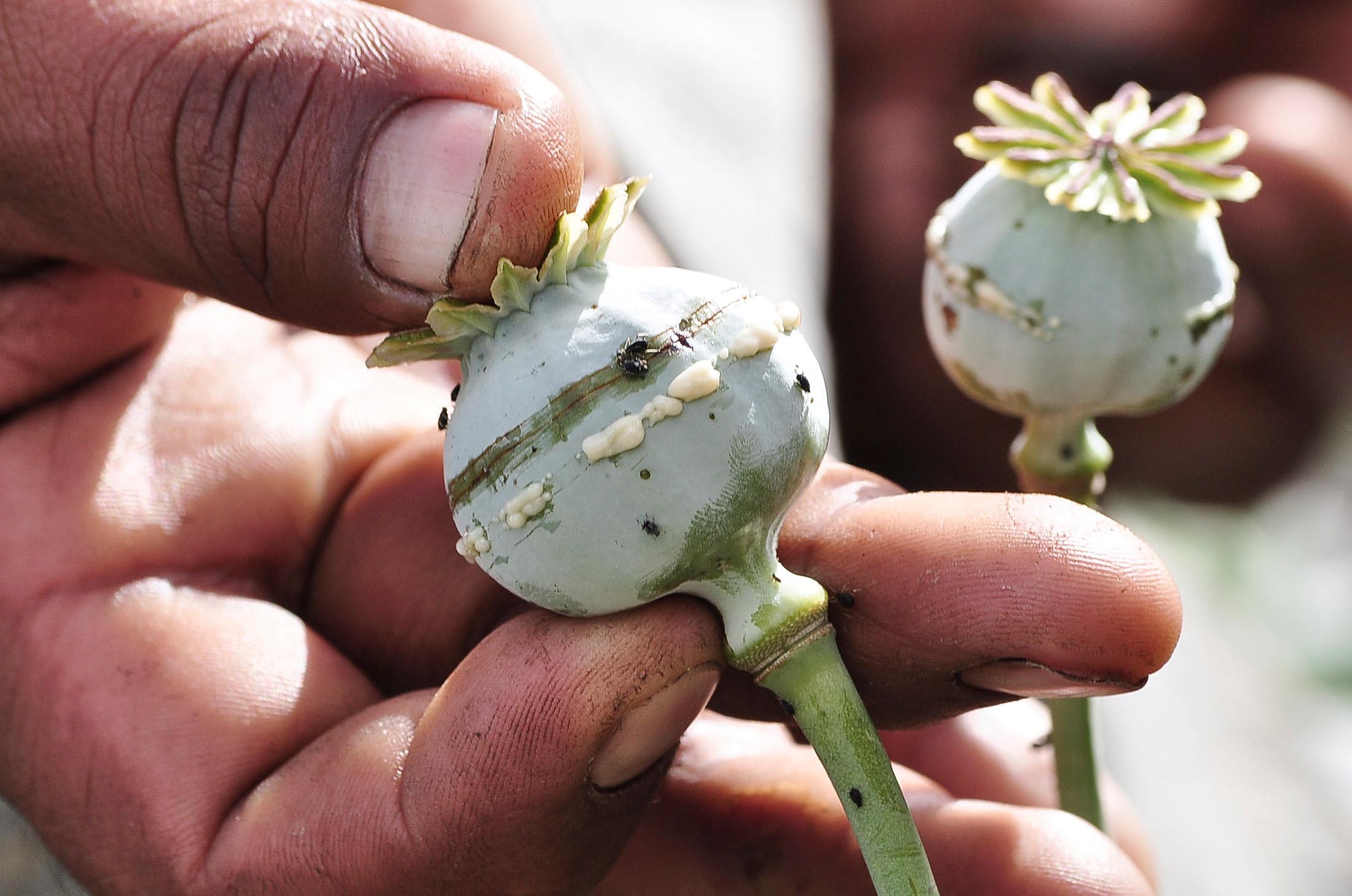Mexico opens up its heroin fight to US, UN observers
MEXICO CITY: For the first time in at least a decade, Mexico's army is allowing the United States and the United Nations to observe opium poppy eradication, a step toward deeper cooperation to fight heroin traffickers, three sources in Mexico said.
The opening could bring Mexico more in line with other drug producing countries like Afghanistan, Colombia and Peru that have been heavily involved with the United Nations in cultivation studies and eradication efforts.
The Mexican army hopes to gain more credit at home and abroad for its work and address doubts in Washington about the quality of its data and the success of the eradication program, the officials said.
Last week, the army flew US military, UN and embassy officials into the heart of Mexico's heroin country to witness the destruction of fields of opium poppies, according to two of the officials with knowledge of the operation.
The ride-along marked the first time Mexico's army has allowed US and UN officials to observe its efforts since it took over most drug eradication activities in 2007, and three more site visits are in the works, according to one of the officials who spoke on condition of anonymity, owing to the sensitivity of the matter.
The army is also preparing to implement by this summer hardware and software developed by the United Nations Office on Drugs and Crime (UNODC) to allow soldiers to file data to headquarters on destroyed fields in real time, two of the officials said.
The information could be used to create a real-time registry of eradication efforts that would give a better idea of how much of the crop is being destroyed.
The shift by the army coincides with high-level bilateral talks between Mexico and the administration of US President Donald Trump about how to stem the flow of heroin north into the United States and guns and money south into Mexico.
However, US efforts to improve relations with the Mexican army and support eradication date back to at least last year, when US assistant secretary of state for narcotics William Brownfield told the US Congress that more needed to be done to destroy fields of opium, the raw material used to make heroin.
Two of the sources said the army arranged the trip to gain more credibility with the US government as Mexico steps up eradication efforts. The army is also trying to win the trust of the Mexican public, given concerns about human rights abuses since it was deployed to fight drug gangs in the last decade.
GOLDEN TRIANGLE
The visit to Mexico's Golden Triangle of narco-states coincided with Trump's unveiling of a task force to tackle the US heroin epidemic in which use of the drug has risen five-fold in the past decade, according to researchers.
The army took the US military officials on helicopter tours of half a dozen sites in Sinaloa and Chihuahua, two of the three states that along with Durango make up the Golden Triangle where most Mexican opium is produced, one of the sources said.
Adam Isacson, an expert on the Mexican military at the Washington Office on Latin America, said the United States had been trying for more than two decades to gain the confidence of Mexican generals and interpreted the new opening as a step toward closer collaboration.
"It's a big development," he said. "Is the US now going to fund an increased pace of eradication operations?"
The US embassy in Mexico declined to comment for this story, as did the Mexican army and Mexico's foreign ministry.
In a written response to questions, the UNODC said it was looking forward to strengthening cooperation with Mexico but did not comment on the specifics of talks with Mexico or the tour.
The Mexican army's distrust of the United States goes back generations owing to the institution's deeply held nationalism. While the Mexican navy has worked closely with US agents to take down drug lords, and the United States has provided millions of dollars of equipment and training for police in Mexico, the army has until now recoiled from close collaboration.
Roberta Jacobson, the US ambassador to Mexico, was seen as key in pushing forward talks with the army since late last year, the sources said.
Mexican poppy cultivation has more than doubled since 2013 to around 28,000 hectares in 2015, according to US estimates. That is enough to produce around 70 tons of heroin, compared with estimates of US demand in recent years that range from 24 tons to 50 tons.
The Mexican army destroyed 25,960 hectares of opium fields in 2015, up 77 percent from 14,662 hectares in 2013, according to army data.
That would suggest Mexico destroyed most of the 2015 crop. But estimates of Mexican cultivation are based on satellite images, unlike census-based UN programs that can confidently map cultivation and eradication data.
Mexico partnered with UNODC in 2013 and issued a first cultivation report last year, about a decade after the UN began to work with Colombia, Peru and Bolivia.






